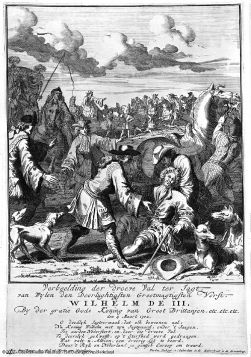|
Stadtholderless Period (other)
In the history of the Republic of the Seven United Netherlands there were two periods when no governor was appointed by the provinces of Holland, Zeeland, Utrecht, Gelderland and Overijssel: *First Stadtholderless period (1650–1672) *Second Stadtholderless period The Second Stadtholderless Period or Era ( nl, Tweede Stadhouderloze Tijdperk) is the designation in Dutch historiography of the period between the death of stadtholder William III on March 19, 1702, and the appointment of William IV as stadthold ... (1702–1747) {{Disambiguation Dutch Republic ... [...More Info...] [...Related Items...] OR: [Wikipedia] [Google] [Baidu] |
Republic Of The Seven United Netherlands
The United Provinces of the Netherlands, also known as the (Seven) United Provinces, officially as the Republic of the Seven United Netherlands ( Dutch: ''Republiek der Zeven Verenigde Nederlanden''), and commonly referred to in historiography as the Dutch Republic, was a federal republic that existed from 1579, during the Dutch Revolt, to 1795 (the Batavian Revolution). It was a predecessor state of the Netherlands and the first fully independent Dutch nation state. The republic was established after seven Dutch provinces in the Spanish Netherlands revolted against rule by Spain. The provinces formed a mutual alliance against Spain in 1579 (the Union of Utrecht) and declared their independence in 1581 (the Act of Abjuration). It comprised Groningen, Frisia, Overijssel, Guelders, Utrecht, Holland and Zeeland. Although the state was small and contained only around 1.5 million inhabitants, it controlled a worldwide network of seafaring trade routes. Through its tradi ... [...More Info...] [...Related Items...] OR: [Wikipedia] [Google] [Baidu] |
First Stadtholderless Period
The First Stadtholderless Period or Era (1650–72; nl, Eerste Stadhouderloze Tijdperk) is the period in the history of the Dutch Republic in which the office of Stadtholder was vacant in five of the seven Dutch provinces (the provinces of Friesland and Groningen, however, retained their customary stadtholder from the cadet branch of the House of Orange). It coincided with the zenith of the Golden Age of the Republic. The term has acquired a negative connotation in 19th-century Orangist Dutch historiography, but whether such a negative view is justified is debatable. Republicans argue that the Dutch state functioned very well under the regime of Grand Pensionary Johan de Witt, despite the fact that it was forced to fight two major wars with England, and several minor wars with other European powers. Thanks to friendly relations with France, a cessation of hostilities with Spain, and the relative weakness of other European great powers, the Republic for a while was able to play ... [...More Info...] [...Related Items...] OR: [Wikipedia] [Google] [Baidu] |
Second Stadtholderless Period
The Second Stadtholderless Period or Era ( nl, Tweede Stadhouderloze Tijdperk) is the designation in Dutch historiography of the period between the death of stadtholder William III on March 19, 1702, and the appointment of William IV as stadtholder and captain general in all provinces of the Dutch Republic on May 2, 1747. During this period the office of stadtholder was left vacant in the provinces of Holland, Zeeland, and Utrecht, though in other provinces that office was filled by members of the House of Nassau-Dietz (later called Orange-Nassau) during various periods. During the period the Republic lost its status as a great power and its primacy in world trade. Though its economy declined considerably, causing deindustralization and deurbanization in the maritime provinces, a ''rentier''-class kept accumulating a large capital fund that formed the basis for the leading position the Republic achieved in the international capital market. A military crisis at the end of the period ... [...More Info...] [...Related Items...] OR: [Wikipedia] [Google] [Baidu] |

